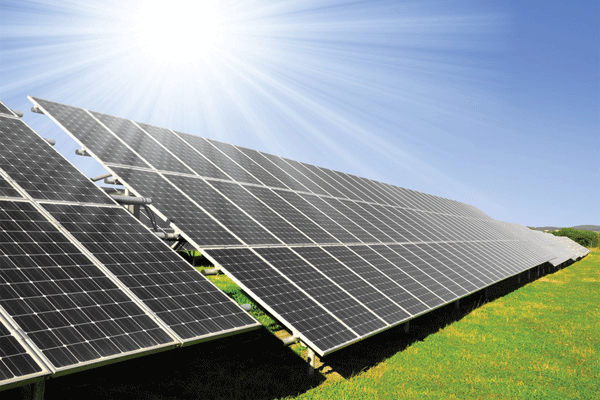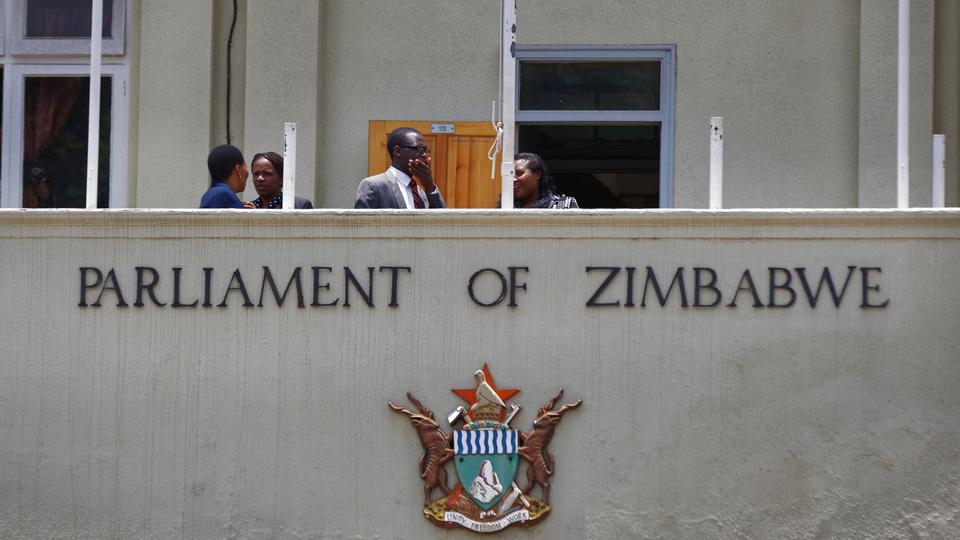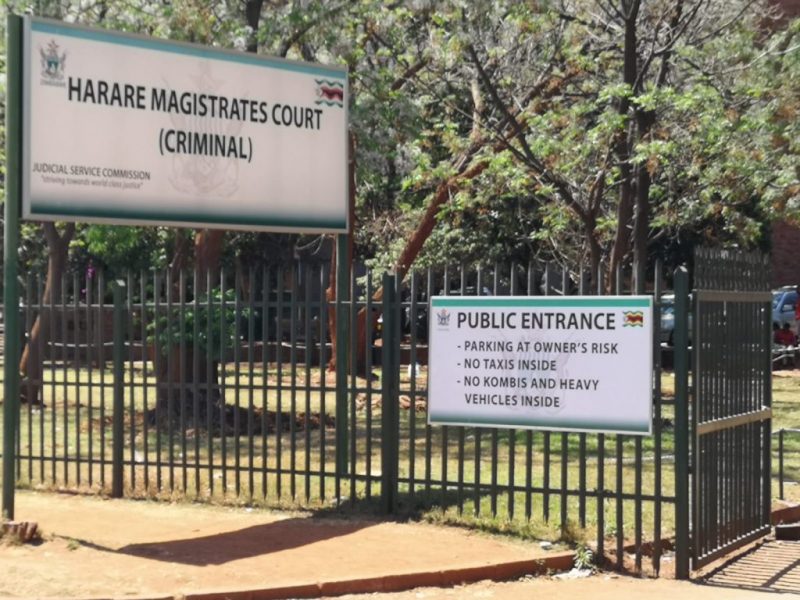
MANAMA, Gwanda South — Three years ago, in 2015, when the 200-panel mini-grid solar energy power plant was established in this remote and hot rural community, 140km south of Gwanda town and about 20km to the Botswana border, there was a lot of fan and pomp as the community’s electricity supply needs seemed to have been solved.
BY TONDERAYI MATONHO
Before the installation of the plant, about a third of the population around this part of the district, of about 5 000 inhabitants, lived in isolation, cut off from access to a power grid and infrastructure that can bring vital economic opportunities.
However, as a team of journalists and civil society organizations’ representatives, discovered during a recent tour of the site organised by the Zimbabwe Women Resource Centre and Network, nothing much has changed in terms of accessing the much-needed power by the communities in wards 19 and 24.
Only a handful of local farmers are benefiting through three flood irrigation schemes being carried out along two major rivers, Shashe and Tuli, because a majority of the household members, one of the major intended beneficiaries, cannot afford the high tariffs being charged per kilowatt.
Five households belonging to local primary school teachers, are also benefitting from the energy plant, together with Mashaba Clinic and two business centres, Musendami and Mashaba business centres.
However, the irrigation schemes have not been properly functioning since the last days of the devastating Cyclone Eline early this year, with local women have been largely left in charge while most men have drifted down south in search of greener pastures due to the moribund economy.
Benevolent Ncube (34), operating at Mashaba business centre, one of the centres receiving electricity supplies from the plant, prefers using diesel to solar power for his grinding mill because he cannot afford the 18 cents per kilowatt being charged by the local distribution and supply entity, the Community Electricity Supply Company (Cesco).
- Chamisa under fire over US$120K donation
- Mavhunga puts DeMbare into Chibuku quarterfinals
- Pension funds bet on Cabora Bassa oilfields
- Councils defy govt fire tender directive
Keep Reading
“I prefer using diesel power for my grinding mill,” Ncube said curtly in an interview during a stop-over at the business centre.
In fact, he and his brother, Godfrey, appeared cagey to talk about the solar energy plant and how the solar power plant is benefitting the community in general.
Neither, too, is Margaret Moyo (56), benefitting from the plant. Through capacity building programmes she gained from some development agencies, she wishes to start a sewing project and a yoghurt production venture from the baobab fruit which grows in abundance in this arid Region V of Matabeleland South province.
“If the tariffs were low and affordable, I would like to start at least two projects; a sewing project and yoghurt production venture from the baobab fruit which grows in abundance here,” Moyo said in a separate interview. The visiting delegation also discovered that the 18 cents per kilowatt rate is much higher than the Zesa Holdings tariff of 13 cents per kilowatt.
Under normal sunshine days when it is not overcast, the plant generates 95-100 kilowatts of renewable energy capacity per day and supplies eight hours of electricity and even stores it in batteries during overcast periods.
In response to the seemingly abnormal situation, especially in a rural set-up with less viable economic opportunities, the supervisor of the solar energy plant, Wingsbud Nare, admitted that plans to expand the projects to cover more beneficiaries and help create more affordable charges are still tricky as they are still in the hunt for investors to partner.
“Certainly, there is under-utilisation of electricity being generated here because this is still a pilot project and we intend to review this tricky situation during the proposed expansion of the projects,” he said.
In addition, Nare said there was need to bring in some investors to help formation of private companies to manage more energy plants as current development partners’ supporting cycles will be ending in January 2019.
The irrigation schemes are Mangongoni and the Rustlers’ Gorge, where three major crops are alternated all-year round, namely maize crop, sugar beans and wheat.
These are grown on 10-15 hectare plots and are largely grown for local consumption, only with surplus treated as cash-crops.
Nare said the schemes are managed through irrigation management committees and lots of inputs like fertiliser are required to boost the poor soil found in this arid region. The command agriculture scheme came in handy during the 2017 planting and harvesting periods.
According to the Gwanda Sustainable Energy for Rural Communities (SE4RC) Programme for Practical Action Southern Africa, one of the development partners providing capacity building programmes for local community members, beneficiaries have to make formal applications for their household electricity supplies.
“Community members, as beneficiaries, have to make formal applications to receive electricity into their homes through Cesco, a local board responsible for electricity distribution and supply,” Zibanayi Kisimisi, the regional projects manager for PA, told the visiting delegation.
The Cesco board, composed of seven men and one woman, is even contemplating installing pre-paid metres and this means automatic cut-off for those households failing to pay up for supplies.
The mini-grid solar energy plant, the first of its kind in Southern Africa, according to Kisimisi, was set up with the assistance of two other development partners, namely Dabani Trust, SNV and SNV, a Dutch partner who mainly provided capacity building programmes.
Under the SE4RC purview, the plant was funded by the European Union to the tune of $1 million in 2015.
With the three development partners’ operational cycles coming to an end in January 2019, the visiting delegation felt that there was an urgent need for investors to come in and stabilise the viability and sustainability aspects of the project, which are currently not very clear.
“The plant is operating under three business models, namely, as a mini-grid supply plant, energy kiosk where solar panels and lanterns generate power and store energy reserves and as a study centre for training youths to prepare them for future business prospects,” Alvote Mutungwe, the local technician and plant operator, told the delegates at the plant.
Energy experts say the use of solar energy in rural areas across sub-Saharan Africa has increased over the years, with many communities lacking access to basic necessities such as electricity, clean water, and effective irrigation systems.
The innovations in solar powered technologies have also led to poverty alleviation projects that combine development strategies and environmental consciousness.
“With recent links being made between solar energy and increased food security in the region, African development projects, mostly in rural areas seem to be recognising the real potential of renewable energy sources especially power derived from the sun,” a visiting delegate, Maria Tsvere, a professor with the Chinhoyi University of Technology, said.
“The populations of small, remote villages such as these, particularly women, scattered throughout Matabeleland South province and even beyond, continue to struggle to survive and need to be catered for by expanding such projects in such harsh climatic conditions, including extreme temperatures,” she said.
Another delegate and a member affiliated to the Harare Residents’ Trust, Joyce Gavaza, said: “With proper planning and organisation, the success of this solar energy project especially with women fully benefitting and being empowered, will serve as a model for future solar rural electrification projects.
“There are still thousands of rural dwellers today living without electricity and such projects are greatly needed,” she said.











